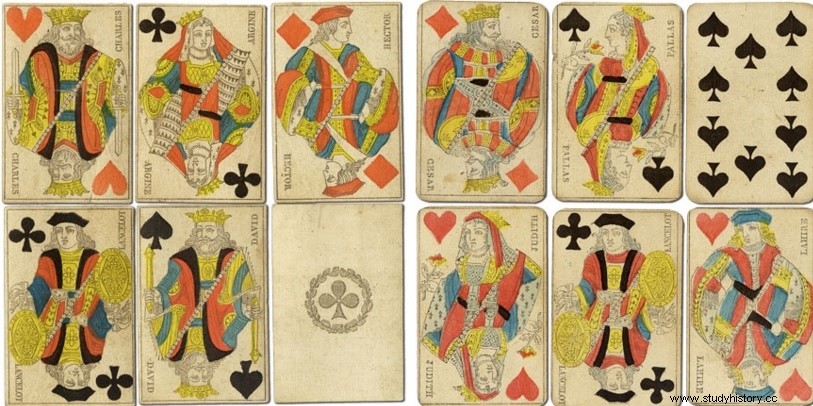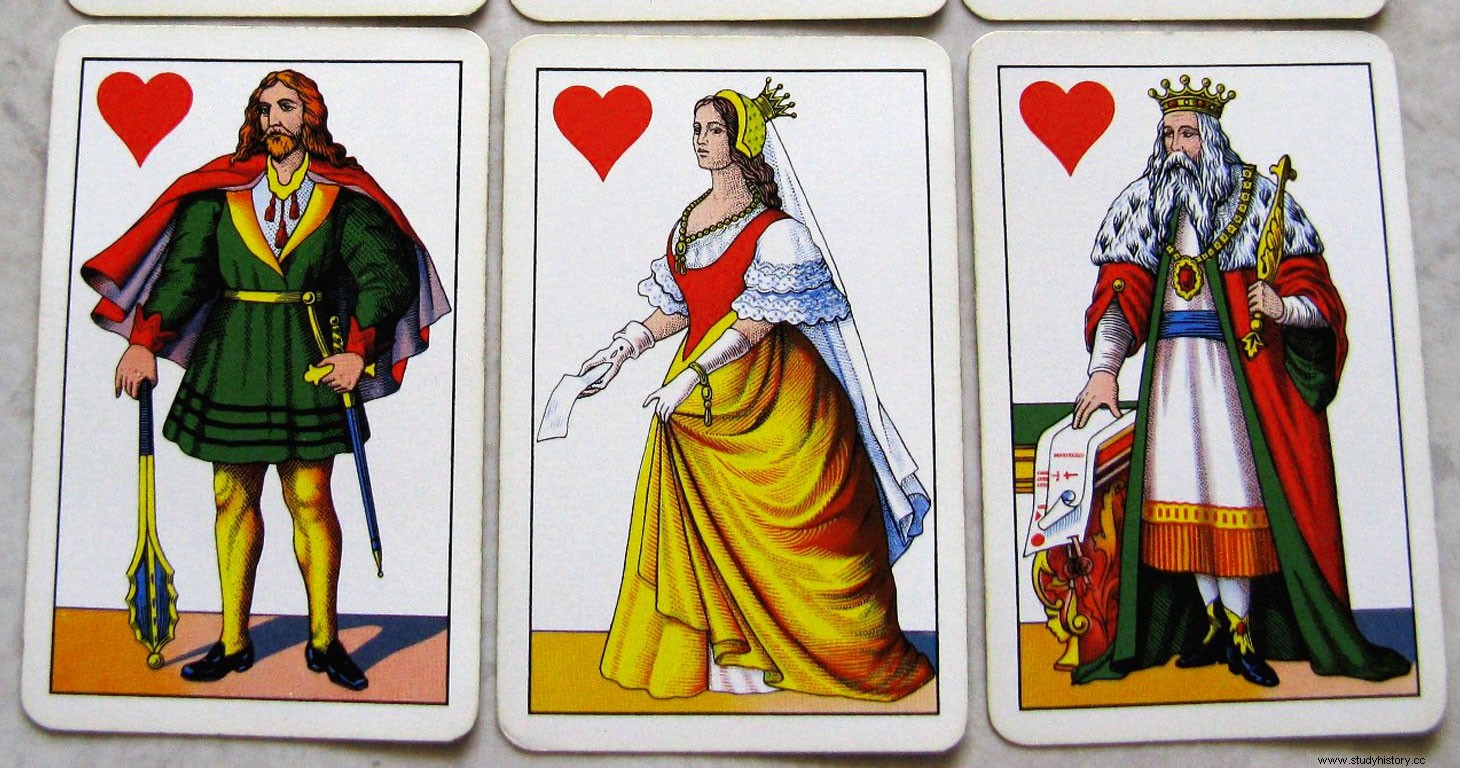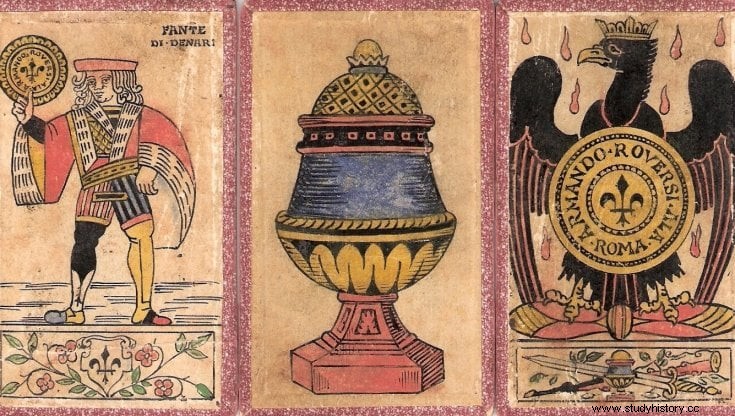
Old playing cards
The playing cards they are one of the hobbies most popular ever.
On a gloomy winter evening or under an umbrella by the sea, many people have fun playing with a deck in their hand.
What do we like to play?
Among the card games most popular today are:
- The poker, invented in the first thirty years of the 1800s. It is loved by both men and women. There are several poker games:there are, in fact, different variants - from Texas Hold'em to Omaha . It is the most popular card game in the world today;
- The bridge, which developed in the first twenty years of the 1900s. According to some, the name derives from the fact that the employees of the English Embassy in Constantinople, in order to play, had to go to a bar that was located beyond the Galata Bridge, a bridge;
- The seven and a half was born around 1890 in Italy and has become over the years one of the symbols of the reunion on anniversaries.
Neapolitan, Sicilian, Treviso, Piacentine … In Italy we really have many variations, but the original story comes from afar.
Where do the queens, cups, kings, diamonds come from ( see also :https://www.pilloledistoria.it/12281/storia-moderna/gioco-d-azzardo-casanova)?
The history of playing cards
All over the world the types of playing cards are numerous.
What changes are not only the images represented, but also the shapes and numbers.
There are, in fact, tall and thin, there are decks of 100 and decks of 25.
The historian and collector Peter Enderbrock declares that playing cards originated in Asia, but the precise country from which they then arrived in Europe is not certain.
There are those who think it was the Chinese to invent them, while others all focus on Persians, but there are those who believe that the cards were born in India.
The truth is, there is no hard evidence, only hypotheses.
One of these, for example, is related to the “game of leaves "( yezi ge ) typical of China of the early 1800s, while another, while remaining anchored to China, delays the invention of cards at the end of the 1200s, when the local police seized papers and printing stencils from a group of arrested people.
The arrival in Europe

Playing cards with artistic representations
The first ordinance banning gambling with cards dates back to 1377 :happens in France and the cards in question are 52 and have 4 suits.
This is told by the Swiss monk Johannes von Rheinfelden.
Most believe it was the Mamluks to introduce the cards in Europe, during the Crusades between 1375 and 1400.
It seems, therefore, that the first traces of card games in Europe were linked to a pastime among the combative, in moments of boredom.
To support this hypothesis there are the similarities between the cards used by the Mamluks and the Spanish ones, from which, for example, the Piacentine, Neapolitan and Sicilian cards derive.
The spread of playing cards

Ancient playing cards
Initially it was mainly the rich to play cards, as these had a very high price:the designs, in fact, were hand painted, were intricate and very colorful.
And the very designs began to cause the fragmentation and differentiation of the decks, as each house and each region wanted their own.
Among the themes the most popular were hunting and the symbols of the ruling families.
Only during the fifteenth century the cost of cards began to become more accessible:that's when the game became popular.
Germany was the first country to use cutting and engraving techniques on copper and wood, making production faster and cheaper.
In the same period the 4 suits of the French deck became the most used all over the world:hearts, spades, diamonds and clubs (some believe that the clubs derive from acorns and the spades from the leaves typical of German cards).
In the United Kingdom , then, the production of playing cards was industrialized:it was thanks to the printer Thomas de la Rue if the cards became a mass product.
The designs still in use today, however, are signed by Charles Goodall.
The drawings, however, were performed symmetrically so that the cards did not have to be turned upside down while held in the hand.
And the Joker?
The Jolly it was introduced by the Americans between 1830 and 1840.
The Joker was presented as the trump card over all the others and was represented as a jester, a figure who does not respect the rules and is able to mock both the king and the queen.
And now that we know the story, what are we playing at? ( Photo from :giochidacasino.it, palermo.repubblica.it/societa and inchiestasicilia.com).
